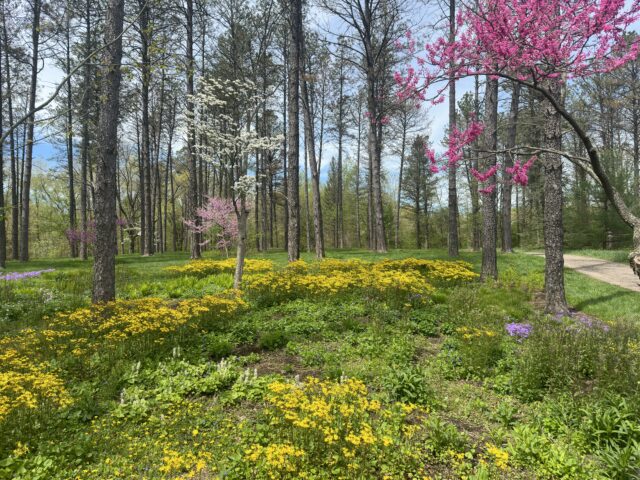Holden Collections Team Travels South to Conserve a Rare Oak Species
November 27, 2023

When we think about plant conservation, things like invasive species removal, habitat restoration, and population monitoring typically come to mind. This is what’s known as in situ (“on site”) conservation– protecting plants where they grow naturally in their native habitats. HF&G conducts in situ conservation work to preserve the native flora within our natural areas at the Holden Arboretum including Little Mountain and Stebbins Gulch, among others. As a public garden, we also have the unique opportunity to conduct what’s known as ex situ (“off site”) conservation as well—the conservation of rare and endangered plants within our living collections. Armed with the knowledge, skills, and infrastructure to care for plants, public gardens are essential resources for conserving the world’s biodiversity. In this blog, I want to share some highlights from a recent collecting trip taken by the HF&G collections team. This expedition, generously funded by an American Public Gardens Association Tree Gene Conservation Grant, focused on the collection of acorns from the rare oak species Quercus austrina (bluff oak) for ex situ conservation within our living collections.
Bluff oaks are widely distributed throughout the southeastern coastal plain, but they are not locally common, and most populations range-wide consist of only a few trees. This may be due in part to the fact that bluff oaks are quite particular about their habitat; wild individuals occur only on wooded bluffs near streams on very sandy soil.

To make things more complicated, the taxonomic relationships between bluff oak and its closest relatives have historically been poorly understood. This is because traits like leaf shape can be highly variable among individuals, and coupled with the pronounced tendency of oaks to hybridize with one another, identification can be challenging. Luckily, we were able to collaborate with botanist and eastern U.S. oak expert Ron Lance to accompany us on our trip and lead us to many sites where he had previously identified bluff oak populations. Armed with pole pruners, herbarium presses, road snacks, and Ron’s vast knowledge of southeastern botany, we would travel south to hunt acorns of the elusive bluff oak in early October.
Due to the wide range of sites we planned to visit across four states, our journey had to be completed in two legs. First, Curator of Living Collections Tom Arbour and Nursery Propagation/Grower Technician M Onion would drive from Cleveland to Birmingham, Alabama (in one day!) where they joined Ron and colleague Emily Ellingson, Curator at Polly Hill Arboretum. Over the course of the week, the team traveled across Alabama and Mississippi with a brief visit to the western tip of Florida searching for the bluff oak.
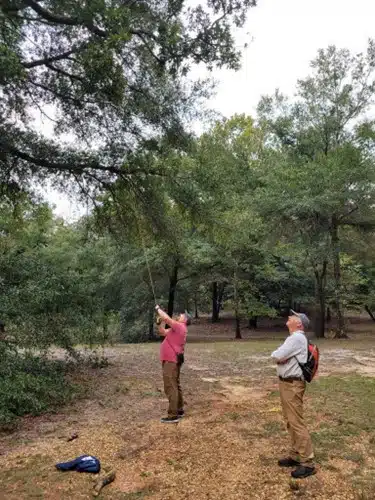
The team stopped at roadsides, recreation areas, and boat launches far and wide in search of acorns over the course of five days. Altogether, they were able to collect from trees at five sites and secure a sizeable number of acorns. Two weeks later, Tom would return with Rhododendron Collections Manager Connor Ryan and I (Alex Faidiga, Plant Recorder) to search for acorns in Georgia and Florida.
Our first site in Georgia was a great introduction to the bluff oak because it was home to the largest population on our list. This gave us the opportunity to study the key features of bluff oak and get a sense of the type of variation we could expect among individuals. One thing I noticed immediately about this site and all other bluff oak sites we would visit on our trip was just how sandy the soil was. It was quite a contrast from the heavy clay soils we are used to in northeast Ohio.

Also present at this site was another species, Quercus margaretta (or Q. margarettae, or even Q. margaretiae depending on who you ask), that commonly hybridizes with bluff oak, and we did indeed find some trees that appeared to be hybrids among the population. In the photo of a hybrid below, you can see that while there may be some subtle differences in the leaves, the hybrids are not very distinct from “true” bluff oak. The most important feature to examine when trying to distinguish bluff oak from its close relatives is the acorn and particularly the acorn cap, which is quite distinct from other oaks with which it co-occurs. These southern oaks were certainly putting our botanical observation skills to the test! At this site alone, we were able to secure more acorns than we were on the entire first leg of our trip, which was a great start to the week.
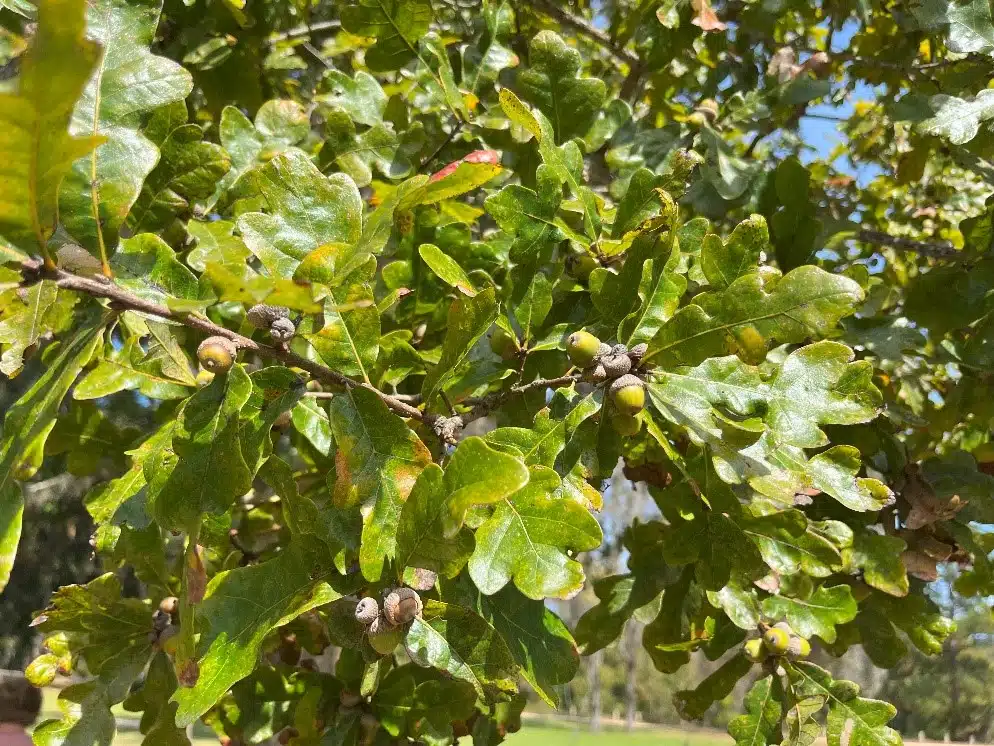
Over the next five days, we would travel to numerous state parks, campgrounds and roadsides and collect acorns and herbarium specimens along the way. A highlight of the trip was when we made a detour to visit the Georgia state champion live oak (Quercus virginiana) that was located in a large cotton field.
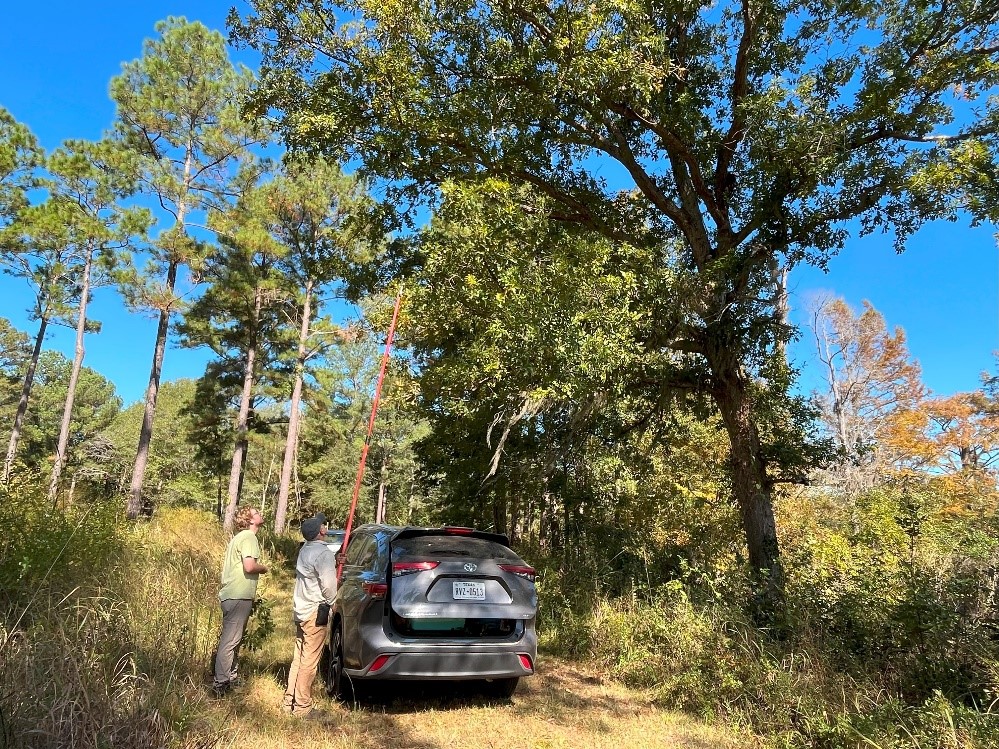
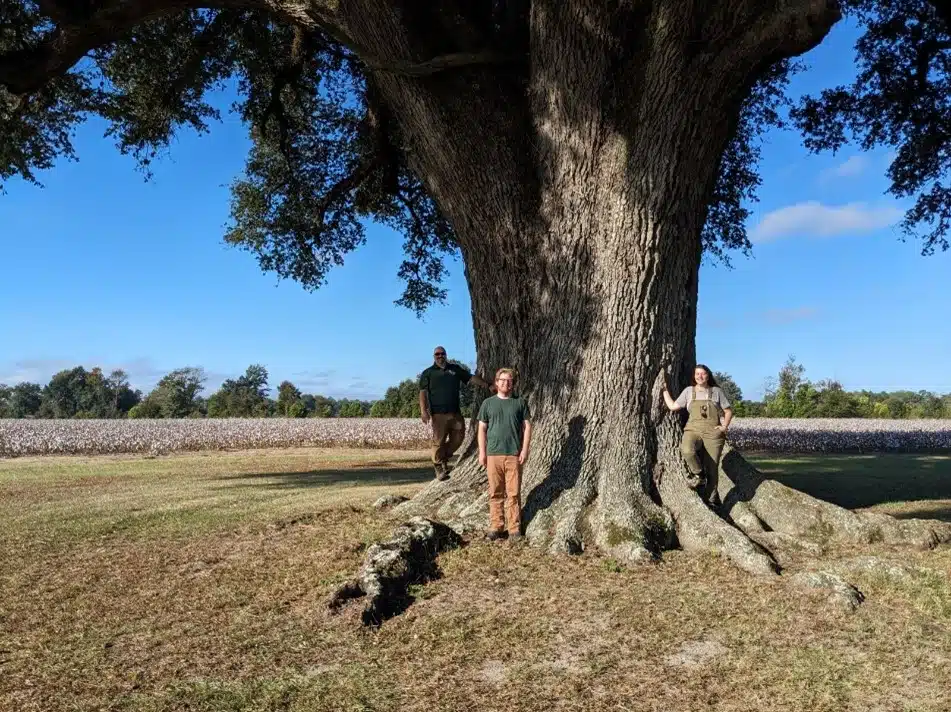
We also had the opportunity to visit the Apalachicola National Forest in northern Florida to search for bluff oak at a campsite there. The bluff oaks we were seeking turned out to have only a handful of acorns left, as the squirrels had already claimed their share. We noted that the further south we went, the fewer acorns we encountered, either due to squirrels or the trees not appearing to have produced many acorns this year to begin with. Despite our miniscule harvest at the campsite, the journey was worth it, as it offered a glimpse of some captivating Florida wildflowers thriving in their natural pine flat habitat. When we spotted them from the car, we obviously had to pull over for a small botanical diversion.

Altogether we were able to obtain the largest number of acorns from our sites in Georgia, followed by Alabama, Mississippi, and just a handful of acorns from Florida. The acorns are currently tucked in for the winter at our nursery where many of them have already germinated. Once the acorns have grown into seedlings, a portion will be planted in our collections, and a portion will be distributed to other botanic gardens and arboreta across the eastern US for safekeeping in various living collections.

Oak seeds are what we call recalcitrant, meaning that they cannot be stored in seed banks due to their intolerance for desiccation. Consequently, living collections that house oaks and other recalcitrant species effectively act as “gene banks,” serving as backups for wild populations. HF&G is one of several institutions holding a Nationally Accredited Quercus Multisite Collection, meaning that we have made an unwavering commitment to the perpetual ex situ conservation of oaks within our living collections. This trip is just one example of how we are honoring that commitment, and it underscores the critical interplay between in situ and ex situ conservation that botanic gardens are uniquely positioned to support.

Alex Faidiga
Plant Recorder
Alex Faidiga is the Plant Recorder in the Horticulture and Collections Department at HF&G. She earned her Masters degree at the University of Tennessee, Knoxville where she studied plant evolutionary ecology and the impacts of climate change on native plants. She was excited to return to her hometown of Cleveland in 2022 to work for HF&G, one of the many places in northeast Ohio where she discovered her love for plants at a young age.
